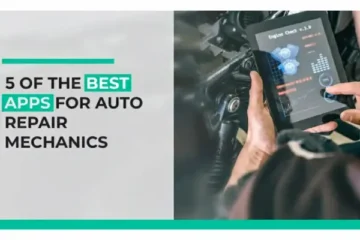Full Mechanic’s Manual No Cost! Apps, courses and jobs
Start in mechanics at zero cost with this full Mechanic’s Manual!
Advertising
Key apps, decode OBD2, follow checklists, and practice safe repairs to grow skills and land your first jobs.

Best free mechanics apps and online courses
Discover the best free mechanics apps and online courses!
BEST APPS AND COURSESYou will remain in the same website
Your Zero-Cost Toolkit: Apps, Guides, and Courses That Work
You can assemble a powerful learning stack without paying a cent.
Use these categories to build your personal Mechanics Manual.
OBD-II code libraries.
Apps like AutoCodes help you translate fault codes into plain English, list likely causes, and show common fixes.
Live-data scan apps.
Torque Lite and Car Scanner ELM OBD2 pair with an inexpensive Bluetooth adapter and display RPM, fuel trims, coolant temp, oxygen sensor voltages, and more.
Structured repair samples.
Haynes offers free sample chapters that explain maintenance and typical procedures with photos and clear steps.
Video instruction for visual learners.
YouTube creators such as ChrisFix, Scotty Kilmer, and EricTheCarGuy show complete procedures, tool use, and troubleshooting logic.
Free online courses.
Alison provides structured modules for beginners, Coursera has audit options for university-level classes, MIT OpenCourseWare covers the engineering behind vehicle dynamics, and AutoEducation.com offers accessible lessons across core systems.
Mixing these sources gives you perspective.
Apps tell you what the code means, courses explain why it happened, and videos show you how to fix it.
Create a simple binder or digital notebook to capture what you learn.
Add checklists, torque specs, parts numbers, and screenshots of live data for future reference.
Core Topics to Prioritize Early
Focus on the big levers that unlock most beginner repairs.
Here is a practical list.
Engine fundamentals and the four-stroke cycle.
Lubrication, cooling, air intake, and exhaust paths.
Braking system components and replacement basics.
Pads, rotors, calipers, fluid types, and bleeding order.
Electrical system principles.
Voltage, current, resistance, grounds, fuses, relays, and how to use a multimeter safely.
Reading fault codes and freeze-frame data.
Interpreting long-term and short-term fuel trims and what they say about air-fuel balance.
Preventive maintenance.
Oil and filter changes, cabin and engine air filters, battery testing, tire rotation, and torque patterns for wheels.
The Roadmap from Beginner to Confident Tech
You will progress faster with a clear path.
Use this step-by-step plan to turn curiosity into consistent skill.
Step 1 — Orientation and Safety
Start by learning shop safety rules and how to set up a workspace.
Understand jack points, use jack stands on level ground, and chock wheels every time.
Learn to read a service procedure before starting the job.
Highlight tools required, torque specs, and any one-time-use fasteners or gaskets.
Practice using a multimeter on a known good battery.
Measure voltage, verify continuity, and identify a bad fuse without pulling every fuse.
Step 2 — Fundamentals with Immediate Wins
Choose simple, high-impact tasks to build momentum.
Replace wiper blades, bulbs, cabin filters, and engine air filters.
Change engine oil and filter with the correct viscosity and capacity.
Use a torque wrench on the drain plug and filter housing to prevent leaks and stripped threads.
Document everything.
Record date, mileage, parts used, and torque values to start your professional logbook.
Step 3 — Diagnostic Literacy
Connect a Bluetooth OBD-II adapter and open a live-data app.
Pull codes and read freeze-frame data to see the conditions when the fault occurred.
Watch fuel trims at idle and at 2500 RPM.
Note how a vacuum leak skews trims positive and how a rich condition skews them negative.
Graph oxygen sensor voltages and coolant temperature from cold start to operating temp.
Patterns teach you more than numbers alone.
Step 4 — Intermediate Repairs and Systems Thinking
Take on brake pads and rotors.
Learn to measure rotor thickness, inspect hoses, and torque lug nuts in sequence.
Replace spark plugs.
Verify gap when required and follow coil-on-plug removal procedures without damaging connectors.
Service the cooling system.
Bleed air correctly to avoid hot spots and understand how thermostat opening affects temperature curves.
Step 5 — Advanced Diagnostics and Control Systems
Study electronic fuel injection logic.
Learn how MAF and MAP inputs influence fuel delivery and how the ECU adapts through trims.
Understand ABS and traction control.
Relate wheel-speed sensor signals to braking performance and stability events.
Introduce CAN bus basics.
Know the difference between power and signal ground, and why poor grounds create ghost faults.
Step 6 — EV and Hybrid Foundations
Learn high-voltage safety rules.
Respect orange-coded cables, follow lockout procedures, and never bypass safety interlocks.
Understand battery management and inverter concepts at a high level.
You do not need to rebuild packs to be valuable, but you should know the service boundaries and when to refer to a specialist.
A 30-Day Action Plan
Week 1 — Setup and Safety.
Build your tool starter kit, read safety sections, and complete two basic maintenance jobs.
Week 2 — Diagnostics 101.
Connect your scan app daily, capture live data snapshots, and decode three different fault codes from sample cases or your own car.
Week 3 — Brakes and Ignition.
Replace pads and rotors if needed, service slide pins, and install new plugs to spec.
Week 4 — Systems Integration.
Tackle a cooling system service, review ABS basics, and write a one-page case study with symptoms, data, steps taken, and results.
Revisit your notes at the end of each week.
Identify what felt unclear and schedule follow-up practice.
Tools, Safety, and Shop Setup
Even the best manual cannot compensate for unsafe habits or the wrong tool.
Build a tidy, repeatable setup and your work will improve overnight.
Essential Tools for Beginners
- Socket set in metric and SAE with 1/4-, 3/8-, and 1/2-inch drives.
- Extensions, wobble adapters, and a quality ratchet.
- Combination wrenches and a set of screwdrivers with magnetic tips.
- Pliers, needle-nose, locking pliers, and wire cutters.
- Torque wrench for critical fasteners.
- Follow manufacturer torque values rather than guessing.
- Hydraulic floor jack and rated jack stands.
- A low-profile jack helps with smaller cars.
- OBD-II Bluetooth adapter and a trusted scan app.
- A multimeter with continuity beeper and backlight.
- Work light, nitrile gloves, safety glasses, and shop towels.
- A magnetic tray to avoid losing small hardware.
Workspace Principles
Keep heavy use tools reachable and label drawers by function.
Store chemicals and fluids separately from food and drinks.
Lay out parts in order of removal on a clean tray.
Take phone photos during disassembly to make reassembly easier.
Sweep and wipe surfaces at the end of each session.
A clean shop is a safer, faster shop.
Safety Habits That Become Second Nature
- Disconnect the negative battery terminal before electrical work.
- Use dielectric grease on connectors where appropriate.
- Never crawl under a car supported only by a jack.
- Place stands on solid ground and shake test before getting underneath.
- Work with adequate ventilation, especially during fuel or brake cleaning.
- Wear eye protection whenever springs, clips, or pressurized lines are involved.
- Read the procedure twice.
If a step feels vague, pause and consult an additional source before proceeding.
Common Mistakes and How to Avoid Them
Over-tightening fasteners.
Use a torque wrench and understand dry versus lubricated torque values.
Parts swapping without diagnosis.
Confirm the cause with data and tests rather than replacing components at random.
Ignoring grounds and power supply checks.
A five-minute voltage drop test can save hours chasing ghost faults.
Skipping the road test.
Validate repairs under varied conditions before closing the job.
Turn Skills into Income
Once your fundamentals are solid, you can begin converting knowledge into honest work.
Start small, keep records, and communicate clearly.
Entry-Level Services to Offer
Oil and filter changes with inspection checklists.
Brake pad and rotor replacements with torque verification.
Battery testing and replacement.
Basic diagnostics with written findings and next-step estimates.
Cabin and engine air filter swaps and bulb replacements.
Wiper blade installations and tire rotations.
Price fairly, be transparent with parts and labor, and provide receipts.
Your clarity becomes your brand.
Build a Simple Portfolio
Create before-and-after photos and capture live-data screenshots.
Write short case notes that explain the symptom, the test result, the fix, and the outcome.
Track customer testimonials and repeat work.
A small binder or cloud folder with three strong case studies impresses more than a long list of vague claims.
Communication Scripts That Earn Trust
“Here is what I found, here is the data that supports it, and here is the safest next step.”
Show a photo of a cracked pad or a graph of a failing sensor rather than just telling the customer.
Provide ranges when estimates depend on what you find mid-repair.
Explain what is optional, what is recommended, and what is safety-critical.
Follow up after two days with a quick message.
Ask how the car feels and whether any lights returned.
Specialize to Stand Out
If you enjoy diagnostics, lean into scan data, fuel trims, misfire analysis, and electrical testing.
Shops often need a reliable diagnostic specialist for tough cases.
If you love drivability, study evap systems, intake leaks, injector patterns, and ignition waveforms.
Your ability to resolve intermittent issues will be highly valued.
If EVs interest you, commit to high-voltage safety and expand gradually.
Many shops need a technician who understands hybrid service boundaries and safe isolation procedures.
Business Basics Without the Headache
Register a simple business name in your area as required.
Keep separate bank accounts for clarity and tax simplicity.
Use plain invoices that list parts, labor, and notes in clear language.
Offer digital payment options to reduce friction.
Maintain liability awareness.
Stay within your competency and refer out work that requires specialized equipment or credentials.
Quick Reference: Diagnostic Patterns and Checklists
Patterns help you move from symptoms to causes faster.
Use these notes to guide your thinking.
Rough idle, better at higher RPM, positive fuel trims.
Likely vacuum leak, unmetered air downstream of the MAF, or intake gasket issues.
High fuel trims at idle that normalize at 2500 RPM.
Vacuum leak is favored over fuel delivery problems.
Negative fuel trims and sooty tailpipe.
Suspect rich condition from leaking injector, high fuel pressure, or faulty sensor input.
P030X misfire on a single cylinder.
Swap coil and plug between cylinders to see if the misfire follows the component.
Intermittent overheating.
Check thermostat operation, radiator fan command, coolant flow, and trapped air in the system.
ABS light with one wheel speed anomaly.
Inspect sensor wiring and hub bearing air gap before replacing modules.
Pre-Repair Checklist
Verify customer symptom and reproduce if possible.
Scan for codes and capture freeze-frame data.
Perform visual inspection for loose hoses, damaged wiring, or obvious leaks.
Check fluid levels and battery health before deeper testing.
Research TSB-style guidance from trusted sources.
Gather needed tools and parts before starting the job.
Post-Repair Checklist
Clear codes and run an extended road test with live data up.
Look for pending codes and abnormal trims.
Recheck fluid levels, torque critical fasteners, and perform a final visual inspection.
Document the work thoroughly in your log.
Communicate findings and maintenance recommendations clearly.
Invite questions and provide a simple follow-up window.
Your First Three Winning Projects
Pick one task from each category to build confidence and momentum.
Complete them in a single weekend or spread them across a week.
Maintenance win.
Oil and filter change with inspection checklist and tire rotation.
Electrical win.
Battery test and replacement, plus cleaning and protecting terminals.
Brake win.
Front pad and rotor service with proper bed-in procedure and torque verification.
Each success compounds your skill.
You will feel the difference in your hands and see it in the data.
Bringing It All Together
The fastest path to mastery is steady practice with feedback.
Your manual, apps, and notebooks are the feedback loop.
Start with safety and orientation.
Move into diagnostics and quick wins.
Advance to systems work and pattern recognition.
Treat your notes like gold.
What you document today becomes your shortcut tomorrow.
Share your progress with friends or local groups.
Helping others understand their vehicles builds trust and opens doors.
With discipline and curiosity, your free Mechanics Manual becomes a career engine.
You will know what to do, how to do it safely, and how to explain your work with confidence.
If this guide helped, share it with someone who wants to learn but does not know where to start.
Your encouragement might be the nudge that changes their path.
This content is for informational purposes only and does not replace professional guidance.
Always follow official safety and repair procedures for your specific vehicle model and local regulations.
Share if this made sense to you.





